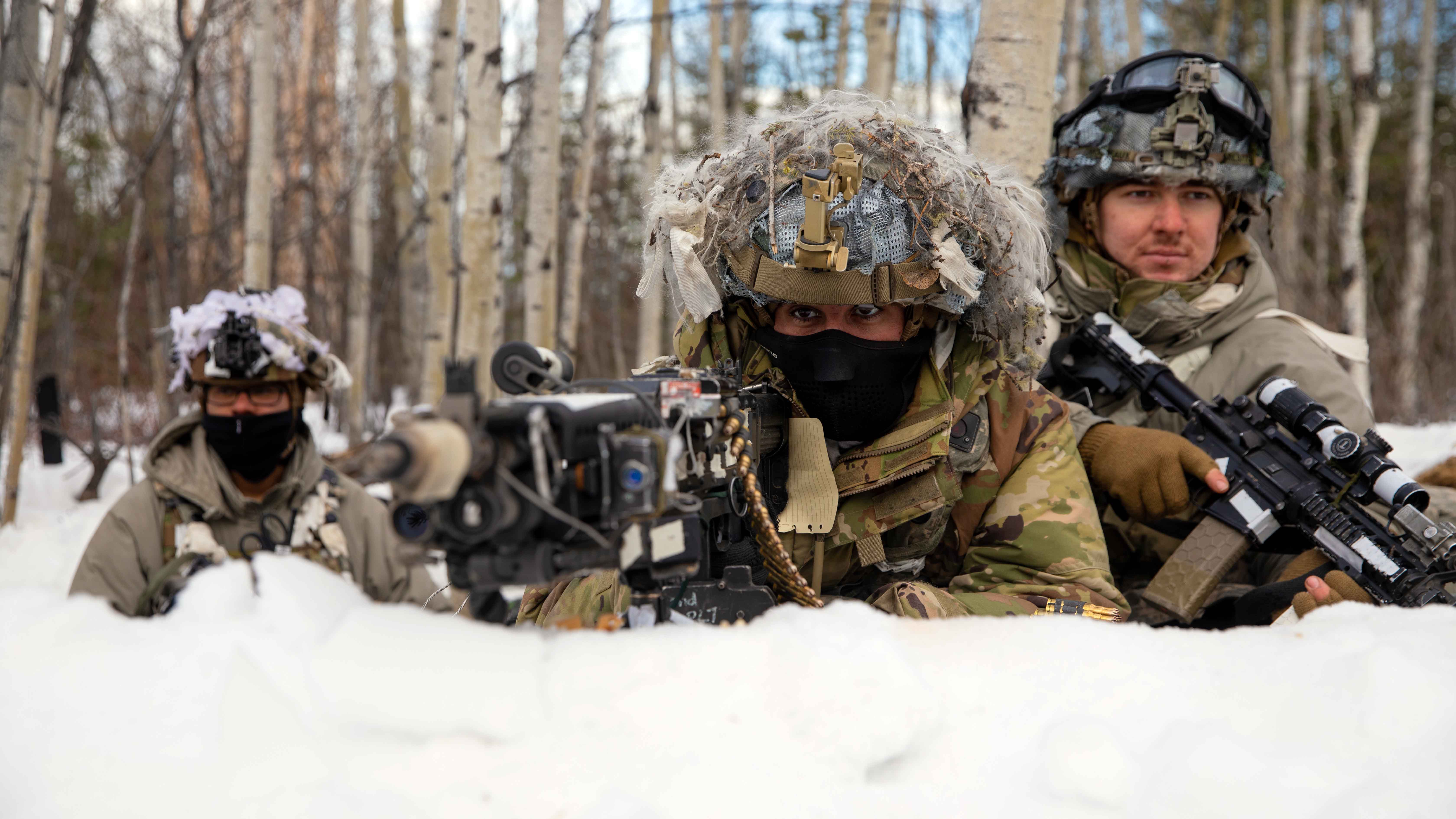11th Airborne Builds Cold-Weather Mettle
11th Airborne Builds Cold-Weather Mettle

In the two years since it was reactivated, the 11th Airborne Division has become a warfighting division, increasing the Army’s readiness and providing joint deterrence in the Indo-Pacific and Arctic regions, said Maj. Gen. Brian Eifler, the division’s commander.
The division headquarters element “didn’t really exist a year ago,” Eifler said, noting that now it is staffed with the right personnel with the right experience and bolstered by formations of soldiers who have the toughness needed to operate in the region’s challenging environments.
“The newest division in the Army, the 11th Airborne Division, is doing exactly what it’s been designed to do,” Eifler said Feb. 26 in a call with reporters. He added that until now the forces in Alaska had no “unity, purpose and identity.”
“Being aligned as a division now, as a warfighting-capable force, has increased the readiness in the Indo-Pacific and for the Arctic,” Eifler said, explaining that training in the Arctic requires more grit than what is required of most soldiers.
“We have to do really hard, tough, realistic training in the harsh environment that we expect we may have to operate or fight in, so that is absolutely critical to our development of character, because that’s formed in the fires of adversity, not in a normal, sort of average training event,” he said.
As an example, Eifler described the division’s third Joint Pacific Multinational Readiness Center rotation in Alaska. Calling it the division’s biggest rotation yet, he said the two-week exercise from Feb. 8–22 involved the entire division and “stretched the entire breadth of the state down from Anchorage all the way up to Utqiagvik” on the North Slope.
The rotation included units from the Army’s sister services, the U.S. Army Reserve and National Guard, Canada, Mongolia, Australia, Finland, Sweden and South Korea, plus international observers from Chile, France, Japan and Nepal.
Lessons were learned by testing some 40 different concepts or equipment, from individual soldier gear to vehicles. There were successes and failures alike, Eifler said, pointing out that learning in a training event is preferable over learning during combat. Two division battalions participated as opposing forces.
With temperatures that ranged from minus 40 degrees Fahrenheit to 40 degrees above zero, soldiers, gear, aviation assets and vehicles were put to the test, and tactics such as camouflage, weapons operation, movement, medical evacuation and even personal hygiene were adjusted as the weather changed.
“Most people don't realize, even in our own Army, that we have to do things differently here,” Eifler said, noting that during Arctic operations, soldiers are not required to shave because the task requires boiling water, “pulls layers of oil off your skin,” and exposes soldiers to cold-weather injury.
Eifler also used the example of starting helicopters in sub-zero temperatures, which requires doing “some things that are just not in manuals, to figure out how to fly and maintain” the aircraft, he said. The division also tested the Army’s new cold-weather all-terrain vehicle, known as the CATV.
“We’ve got about five of them of the initial tranche,” he said. “It’s very light in the snow, and it can work on the muskeg, which is like a mud quicksand, and then it goes into all the different types of snow that we have.”
The environment challenges everything from operating electronic equipment and weapons to maneuvering in ever changing conditions, Eifler said. “We’re training very hard, but it’s what we do to provide a credible deterrent to our adversaries,” Eifler said. “We’ve got to show that we’re ready to fight and win, whether it’s across the Indo-Pacific or in the Arctic.”

